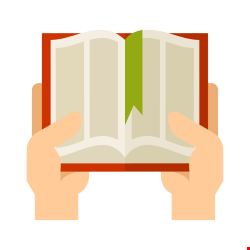
Conjunctions
Conjunctions
Conjunctions are words that do the following:
Examples from “Adieu”
Check the excerpt below:
“Elle était mariée, mais l'époux venait tous les samedis pour repartir les lundis.
In the sentence from the short story, we see “mais” used to connect two clauses. The conjunction links “Elle était mariée” and “l'époux venait tous les samedis pour repartir les lundis” to fully describe the situation.
Review the phrase below:
Cela dura trois mois, puis je partis pour l'Amérique
The conjunction “puis” is used to express the sequence of events. We understand from the phrase that the affair lasted for three months then the speaker left for the state. The conjunction links the dependent clause to the main clause to create the complete thought.
Read the excerpts below:
que j'allais découvrir des choses affreuses et navrantes.”
In this example, the conjunction “et” links two words that equally describe what the speaker discovered at that time, something horrifying and heartbreaking.
Tandis qu'elle ne comptait plus, elle, cette merveille de grâce coquette et fine.
The conjunction used in the sentence above links two clauses without being placed in the middle of both. “Tandis que” (whereas) described the relatio between the woman’s past and her present state.
Conjunctions are words that do the following:
- Link two nouns of the same value
- Link dependent clauses to the main clause
- J’aime les pommes et les raisins. (I love apples and grapes.)
- J’ai dit que j’aime les raisins. (I said that I like grapes.)
| French | English |
| car | for, because |
| donc | so |
| ensuite | next |
| et | and |
| mais | but |
| or | now, yet |
| ou | where |
| ou bien | or else |
| puis | then |
| comme | as, since |
| loraque | when |
| puisque | since, as |
| quand | when |
| que | that |
| quoique | even though |
| si | if |
Examples from “Adieu”
Check the excerpt below:
“Elle était mariée, mais l'époux venait tous les samedis pour repartir les lundis.
In the sentence from the short story, we see “mais” used to connect two clauses. The conjunction links “Elle était mariée” and “l'époux venait tous les samedis pour repartir les lundis” to fully describe the situation.
Review the phrase below:
Cela dura trois mois, puis je partis pour l'Amérique
The conjunction “puis” is used to express the sequence of events. We understand from the phrase that the affair lasted for three months then the speaker left for the state. The conjunction links the dependent clause to the main clause to create the complete thought.
Read the excerpts below:
que j'allais découvrir des choses affreuses et navrantes.”
In this example, the conjunction “et” links two words that equally describe what the speaker discovered at that time, something horrifying and heartbreaking.
Tandis qu'elle ne comptait plus, elle, cette merveille de grâce coquette et fine.
The conjunction used in the sentence above links two clauses without being placed in the middle of both. “Tandis que” (whereas) described the relatio between the woman’s past and her present state.